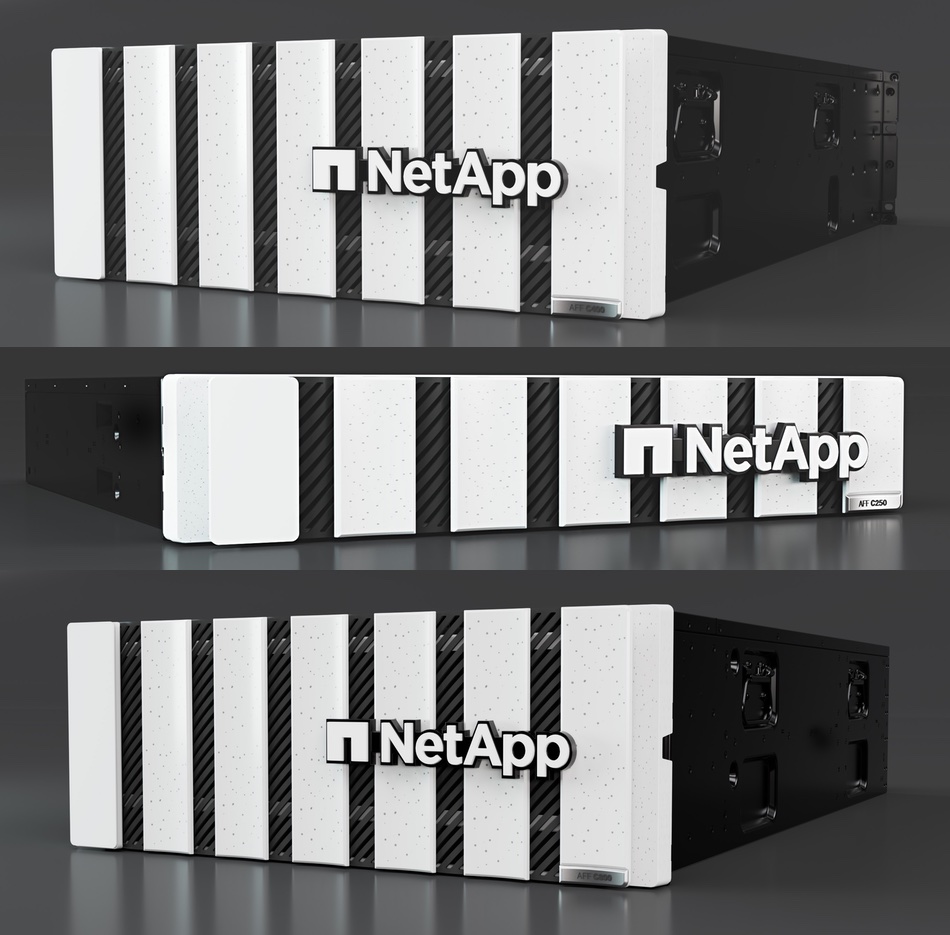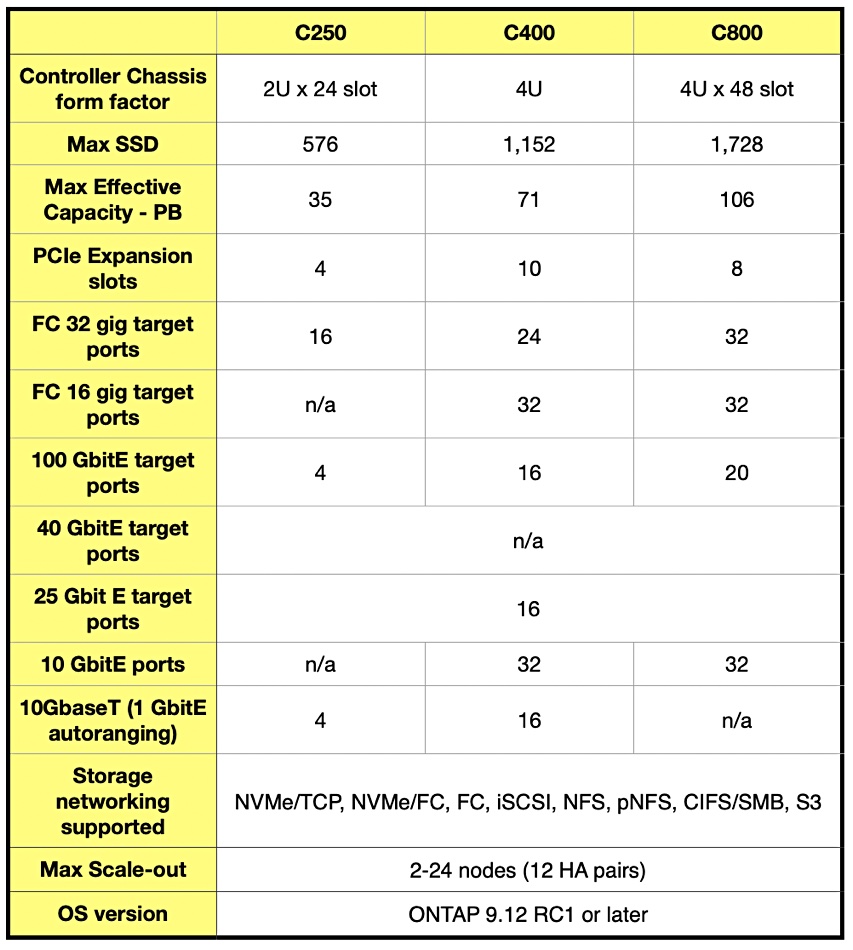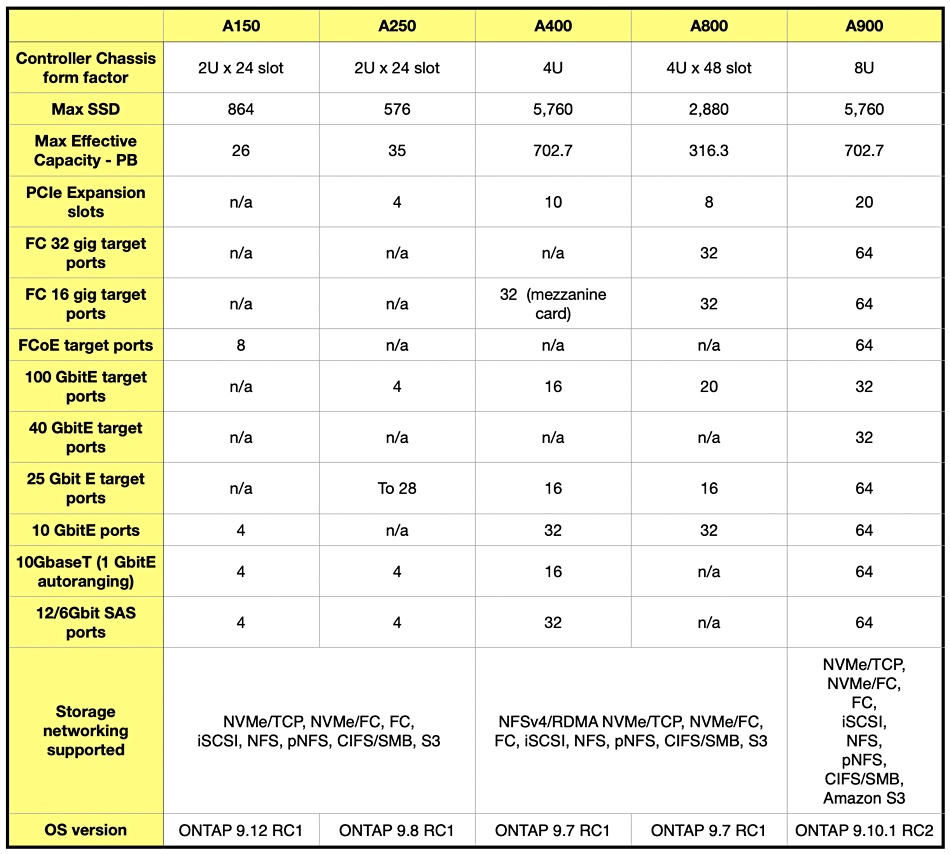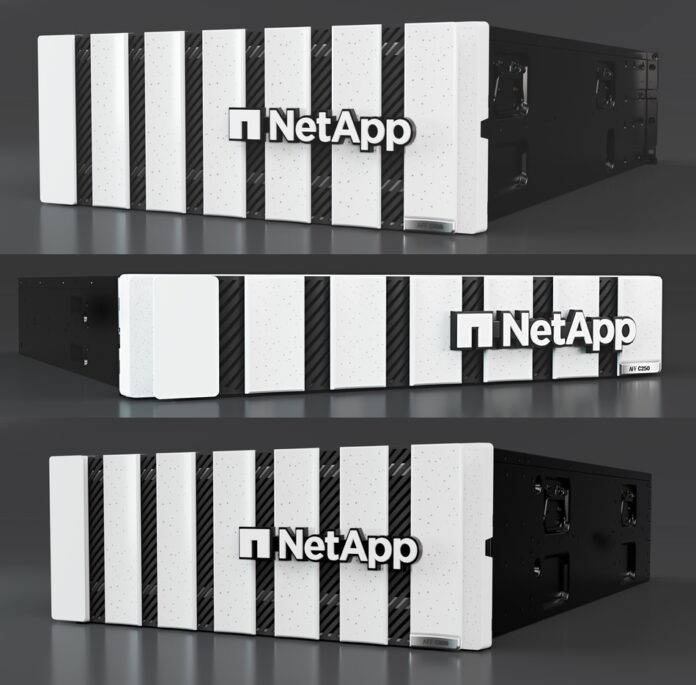NetApp has added a more affordable C-Series to its AFF (All-Flash FAS) series of ONTAP arrays, using quad-level cell (QLC) NAND instead of the TLC found throughout the existing A-Series. It has also announced its ONTAP software is natively available on Google’s cloud along with a new Pure Evergreen-like business model.
The company says the C-Series provides a more sustainable and efficient storage system than hybrid flash and HDD systems, such as its FAS arrays. NetApp wants to be perceived as helping customers better navigate the current economic and budget climate. Customers can enjoy, it claims, flash performance for a price close to disk and in a fraction of the footprint.
Several suppliers have existing storage products using QLC flash: Dell’s PowerScale F600 and F900, all VAST Universal Storage filers, Pure’s FlashArray//C and FlashBlade//S systems, and various StorOne systems. Now NetApp has joined the QLC array party.


There are three C-Series products – the C250, C400 and C800 – which all scale out to 24-node clusters. They use NVMe drives, and the smallest, the C250 in its 2RU chassis, has 1.5PB of effective capacity. NetApp claims this means you can reduce up to 95 percent of the rack space and save up to 85 percent of energy cost over hybrid flash storage.
We asked NetApp for the details of the hybrid array it used for its comparison and were told: “We didn’t use a specific system (ours or a competitor’s), but rather this is a general example to pictorially demonstrate the advantages of moving from a legacy hybrid flash system to the C-Series – a rough estimate for illustration vs a comparative legacy 1.8TB SAS HDD system with no storage efficiencies. So these are just some calculations (hence ‘up to’) based on a theoretical example of 2.5 fully loaded racks of low capacity drives.”
This seems to be a fairly vague but surefire way to get high percentage benefits that could also be used by Dell, Pure Storage, StorOne or VAST Data QLC flash systems as well.

NetApp says the C-Series systems are suited for large-capacity deployments. From the storage capacity point of view, the C-Series’ 35PB to 106PB effective capacity range puts it partway between the A-Series A250, with its 35PB, and the A400 with its massively larger 702.7PB.
New A-Series entry level
NetApp has also announced a new entry-level A-series, the A150, which uses TLC flash like the rest of the A-Series products. The A150 slots in below the A250 and uses the same 2RU x 24-slot enclosure. However, its effective capacity is up to 26PB whereas the A250 ranges up to 35PB. The A150 has no PCIe expansion slots or Fibre Channel ports, supporting 10GbitE connectivity only.
A comparison table shows its limitations compared to the other A-Series arrays:

The minimum/maximum scale-out numbers, common across the A-Series and C-Series range, is 2 to 24 nodes or 12 high-availability pairs.
NetApp positions the A150 as having a good fit with Remote Office/Branch Office (ROBO) requirements and other distributed deployments needing entry-level, enterprise-class storage, with better than disk performance, scalability and expansion options, and support for MetroCluster IP.
All four new AFF systems inherit ONTAP’s many data reduction, protection and management services, and can be supervised through NetApp’s Blue XP software control plane. They are available now.








